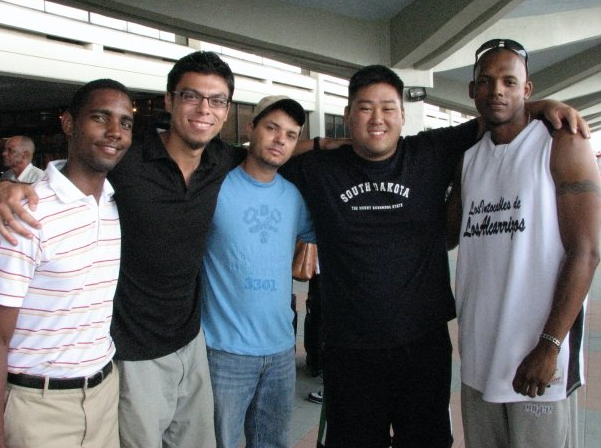In a couple of weeks, I will lead a group of 15 high school students and 5 young adults on a ten-day missions trip in the Dominican Republic. It will be our ministry’s 12th short-term trip in the last 7 years and trip and my final trip as a pastor at Antioch Bible Church.
Every year when missions season rolls around, I ask myself, “can we really do this again?” Missions is time-intensive and exhausting on multiple levels. Now that I have children, it is so much harder to leave. Financially, it stretches and often taxes the budget of our church. Fund-raising is difficult and sometimes keeps me up at night. I fear for the safety of our students. (One year, just before we went to Trinidad, a parent gave me an article about a Trinidadian pastor who had just been gunned down in the region where we were headed.)
It should be said that short-term missions (STM) is a hotly contested subject, with plenty of people arguing that the time and resources would be better used elsewhere. See this post. Or this one. Why not just send the money that you raise? Doesn’t it develop unhealthy dependency on the Western church? Isn’t it more like a vacation for the people who go? Does it really make a difference in the lives of the people on the mission field?
I am sympathetic to these concerns, and definitely agree that STM can be done badly. After taking 9 trips in 4 years, we took a couple of years off to rest and re-evaluate. But after the 2-year hiatus, we decided to start taking STM trips again. Why?
1. STM training is a powerful vehicle for discipleship. If you don’t train participants for the missions trip, it may end up more like a vacation or at the very least a retreat. But if you use missions training as a vehicle for discipleship, then the entire preparation period becomes a liminal experience that is arguably more impacting than the trip itself.
We put high expectations on trip participants, prescribing a regimen of exercise, prayer, accountability, Scripture memory and team-building during the months leading up to the trip. Our students complete discipleship curriculum in small groups (this year we are using Multiply), prepare gospel presentations, memorize Scripture and even part of the Heidelberg Catechism. In the weeks immediately before the trip they have 8-9 days of intensive training, 8 hours every day. These kind of intensive experiences afford us the time and space to go deep with students relationally and spiritually. It might not work in every situation, but for our church, the discipleship that occurs during missions training fosters an incredible amount of momentum for our ministry.
STM surfaces student leaders. Throughout the trip we emphasize that missions is a mindset not just an experience. Why would you go overseas and serve and then come back and not serve your church the same way. Every year I watch students step up and become leaders during missions trips. Those students then join the student leadership team that acts as catalysts for our ministry during the school year. Honestly, discipleship doesn’t make sense unless there is a mission. Students who go on STM learn to see the rest of life as mission, and then understand the need for discipleship.
STM can cultivate globally minded Christians. It is amazing to see the “fruit that remains” long after summer missions is over and the students leave our ministry. We have a student who took a 2 year mission to Japan after finishing college. (He got married in Japan and is still there). We have another former student who just graduated Moody and is thinking about ministry in the Middle East. We have another former student who co-founded an educational non-profit in Uganda while he was in college. I am not necessarily claiming that all of this is completely due to STM, but I would argue that STM was an important part of their spiritual and vocational formation. (This of courseis not to speak of the many other students who serve their churches as committed, mission-minded laypeople).
STM connects students to the global church. One of my main goals in taking students on these trips is to give them a larger vision of God and his work in the world. I want them to know that God is bigger and better than they think; the church is bigger than they think, and that God is already at work in the world before we even get there. Furthermore, it creates friendships and partnerships with other Christians that continue (thanks to social media) long after the trip.
STM is a wonderful opportunity to experience God’s provision. If I’m honest, the single greatest factor that almost keeps me from taking STM trips is the financial burden it places on our church and the families of our students. We send out support letters and do car washes, etc. but every year it just seems like so much money. And yet, every year we experience God’s provision. One year we had a local business donate the cost of building a house in Tijuana, Mexico. Another year we applied for and received a grant from a Christian foundation. Another year we had some church members donate a piano that we sold for $2000. And every year people sacrificially give. It is humbling, but every year I am amazed by God’s faithfulness to us. [By the way, if you’d like to help out this year, please let me know. We have several students in need of a lot of help!]
STM isn’t the only thing that we do, but it is one of the structures that has generated the most momentum and lasting transformation for our ministry. And so, despite the many reasons not to take STM trips, we have continued to go.

